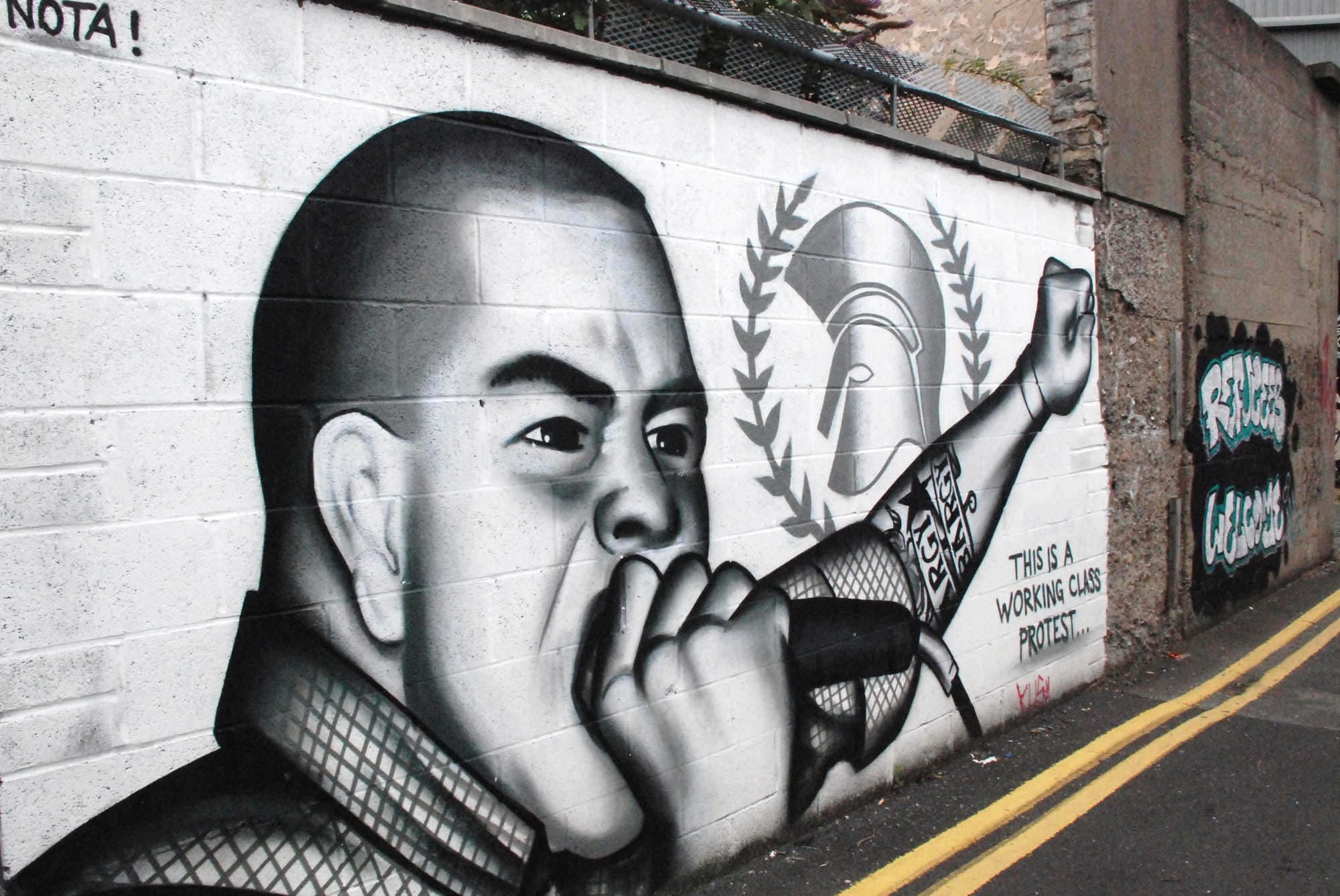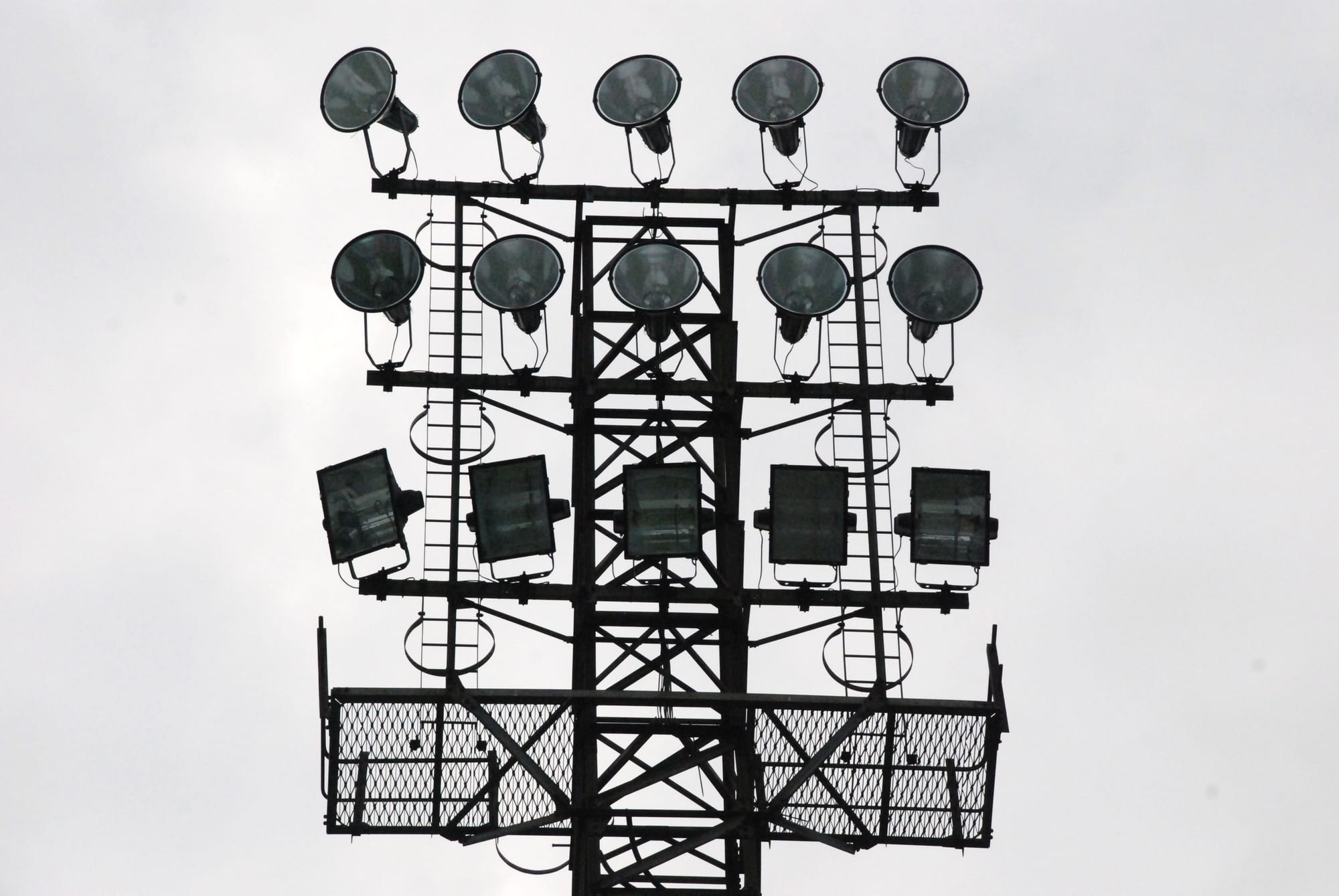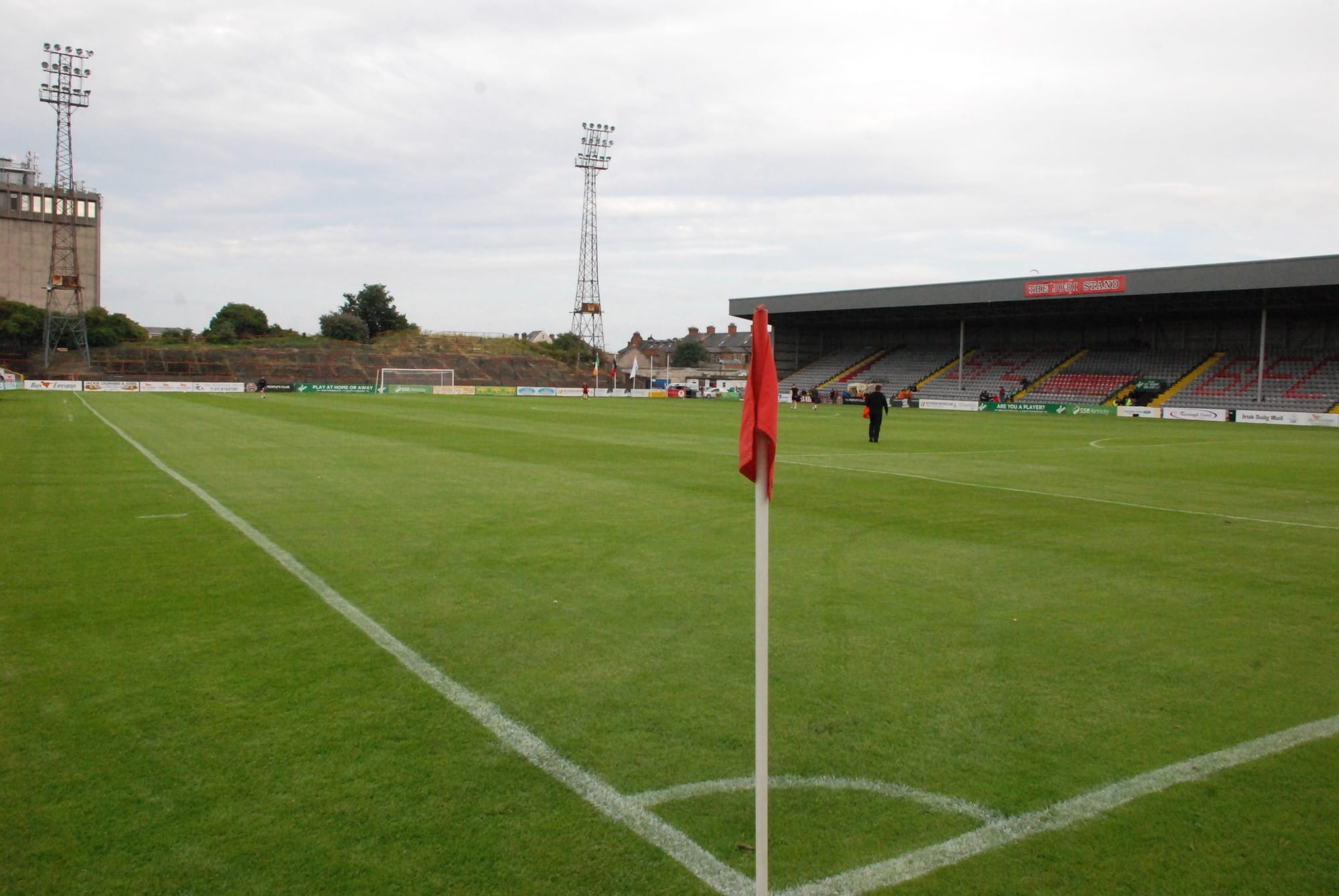What would become of the Civic Offices on Wood Quay if the council relocates?
After The Currency reported the idea of the council moving its HQ, councillors were talking about and thinking through the pros and cons and implications.
The crash forced Bohemians F.C. to re-evaluate their business model – to transform.

B?ack in 2010, Bohemian F.C. looked set to go under. The Phibsboro-based club had borrowed on the back of its only asset, the historic Dalymount Park, with a plan to sell the land and move to a pitch near the airport, says president and former treasurer Chris Brien.
It had pumped money into its main squad, with the hope of further success on the pitch beyond the League of Ireland – plans backed by members, who had owned the club since its foundation in 1890. “Everyone was chasing Europe, and there was a lot of money being spent,” said Brien.
But that included money that they didn’t have, he says. When the economy tanked, and the redevelopment deal fell through, Bohemians looked set to fold.
Fast forward to 2017 and Bohemian F.C. is still member-owned, but it no longer owns its stadium – which was sold to Dublin City Council in 2015 for €3.8 million – and it has little or no capacity for private investment.
But in rebuilding itself with a new community focus, those involved argue that it is back closer to its history and ethos. “I think a lot of clubs, including ourselves, forgot that we were a club,” says Brien.
Perhaps the member-supported model doesn’t work too well if you’re chasing trophies, he says. “But it does in other ways. It depends on what you actually want from your club.”
Across Europe, different football clubs are run in different ways.
In the UK, the top clubs in the Premier League are owned by assorted billionaires, according to BBC sports journalist Stephen Evans, writing back in May 2013.
In Germany, meanwhile there is the 50+1 rule, “whereby the association or club has to have a controlling stake” and “commercial interests can’t gain control”, writes Evans.
For the last seven years, Bohemians has swung back towards its roots in membership, building from the foundations up rather than the other way around, says Brien.
It was hard going for a while, when the club hit rock bottom. The first step to keeping the show on the road was to “drastically reduce” the playing budget. “We reduced our budget by 90 percent,” says Daniel Lambert, former director, now head of strategic planning.
The club had to let go of full-time staff and terminate players’ contracts and meet with creditors. “We tried to explain the situation,” he says. “We never said, ‘We don’t want to pay you.’ We just said,‘We can’t pay you.’”
There were rolling negotiations and meetings with members every few weeks to keep them up to date, said Brien. “We couldn’t just go bust one day and the members asking, ‘How did this happen?’” he says.
But as Lambert sees it, the process of rebuilding has meant a return to the founding traditions of Bohemian F.C., too, which was based on the model of “active citizenship”.
“That’s something that’s lost in modern society,” he says. “Most football fans now, especially in the UK and what kids are familiar with, is that you pay to go to games and that’s the extent of your involvement.”
After the turmoil in 2010, Lambert and others tried to identify what the club meant off the pitch, to reach back out to the community and ask the simple question: what is the Bohemians brand?

They got a crowd out to spray-paint the walls around Dalymount with messages. The club became involved in the marriage-equality campaign, and has opposed direction provision, the system for keeping asylum seekers in hostels where they are unable to work or, often, to cook for themselves. In 2015 they appointed a club poet, Lewis Kenny.
“We noticed we were getting coverage in more cultural circles,” says Lambert. “League of Ireland clubs are generic. They all do the same thing.”
Some of the fans haven’t been completely happy with the move to make politics part of the Bohemian F.C. identity.
“While the new guys coming in are great, we’ve got a big, old section of support we can’t alienate,” says Brien, the club president.
Lambert sees it as necessary social commentary, though. “What we tried to do was make the club more relevant,” he says.
Bohemian F.C. wasn’t the only League of Ireland club to face difficult times.
In 2005, Shamrock Rovers F.C. went into examinership and, to prevent liquidation, the fans rallied round and raised €250,000, says sports journalist and long-time Rovers member and supporter Macdara Ferris.
The club was saved when Ray Wilson, a Rovers fan, fronted a further €250,000 to cover the club’s debt to the Revenue Commissioners.
In order to dig itself out and build up the club, Rovers has diluted member ownership, says
Ferris. Until last year, members owned 90 percent of Shamrock Rovers.
Yet there were improvements that some thought needed to be made. “There was a recognition that the club hadn’t developed players from their own youth team,” he says.
There was a disconnect between the senior team and the Rovers Academy, and they needed the
junior and senior teams to play in the same place, he said. Now, they do that on an all-weather pitch in Kingswood.
The team still needed more funding though, to further develop the facilities, says Ferris.
In March 2016, Ray Wilson pumped in further investment in the form of a €1.5 million tax-free loan: €1 million for youth development and €500,000 for facility development.
After that, members voted to reduce their ownership stake from 90 percent to 50 percent.
It made a difference that it was Wilson putting up the money, said Ferris. “If there was anyone else investing there would have been a concern.”
Many teams across Europe look to a small breakaway club in Manchester for ideas on how to build their own member models.
In 2005, after American businessman Malcolm Glazer launched his successful bid to take over Manchester United, a spin-off team, F.C. United arose from the ashes, says Finance Director Frank McGrogan.
They are member-owned, refuse to throw corporate events, and have a one-person, one-vote system. “The model works,” he says.
For 10 years, the club bounced around from ground to ground, but it got a permanent stadium two years ago, says McGrogan.
In order to become financially stable, the board have stripped the club down; their income comes from season tickets, food and beverages sold at matches, parking and programmes.
They lease their football pitch and run club lotteries and draws. It’s back to basics, says McGrogan. The not-for-profit club competes in the National League North. “But we compete within our budget,” he says.
F.C. United of Manchester regularly consults with other similar clubs like Schalke in Germany, Malmö in Sweden and Wimbledon in London.
It can be hard for clubs to balance investment in the future with the lure of trophies now.
Shamrock Rovers haven’t won a league title since 2011, but they’re focused right now on youth development, says Ferris.
To keep the turnstiles clicking, the club have run corporate match nights, done Q&As with former players, and revamped the match programme, he says. “This is a medium- to long-term development.”

Bohemians don’t have the capacity to invest large amounts in the future for now, and it’s
unlikely members would vote for a dilution of ownership, says Lambert.
Bohemians F.C.’s tax status, like F.C United’s, is midway between a charity and a business. “There’s no feasible way for anyone to make a profit,” says Lambert. It’s all pumped back into the club, in other words.
“There’s no allowance made for profit. So all money must be directly invested into the club,” he says. “You never remove money from the club.”
Brien says that with no sugar daddy, capacity to grow is limited but he cautions against big investment. He points to Bray Wanderers F.C., which, in the last few days, has plunged into turmoil amid reports that players’ wages would be covered only until the end of the first week of July.
“There’s room for all models if they’re done correctly,” he says. “But then you’ve a Bray model that’s collapsing in a heap. That’s an investor pumping money in.”
It takes time to build up a youth team, but there are players coming through, he says. “Hopefully – it might be 5 years, it might be 10 years – we will have 8, 9, 10 of our squad homegrown.”
Bohemian F.C., following a seven-year humbling, can work as a member-owned club despite a shortage of money, he says. “But we need to get more fans in through the gates to give us a bit more money so that we can invest correctly in the team and then grow.”
Recently, the club launched a fundraising campaign to buy a new player, asking fans and members to dig deep.
“We gave a budget to the manager that was slightly increased. When he said he needed more money … we simply didn’t have it,” says Brien.
They had to look elsewhere for a new player. How sustainable this is remains to be seen. Could they continue down that path year on year? “No,” says Brien. “It’s €365 to be a member. That’s not a small amount. Can we keep going back asking for more money? I don’t think it’s on.”
Long-time fan Gerry Sexton thinks the club should continue to look at how it can embed itself in the community around it.
“We had to ingrain ourselves,” he says, reflecting back to 2010. “People around the area didn’t even know we were here.”
He says that he hopes the club continues to take players to nearby Mountjoy Prison to train with inmates, and to work with Focus Ireland – as it has done in the past.
Some older members were opposed to the club’s stance on marriage equality, he recalls, but he wasn’t one of them.

“I’m not young. I’m 53 myself. I let everybody do their own thing, but some of the older crowd asked why we’re getting involved in this,” he says. “But my motto is ‘Live and let live.’”
There’s a question mark, though, around how all the off-pitch activities will lead to success on the pitch.
Players obviously want to win, but the club’s culture is one of the reasons he joined last year, says Bohemian F.C. goalkeeper Shane Supple.
“I saw what they were doing down here and what the club was about,” he says. In a way, there is a community feel to Bohemians that is not dissimilar from a GAA club, says Supple.
Do Bohs fans want to win trophies or be part of a member-owned, community-focused club? “It
depends who you’re talking to,” says Brien, the club president. “I’d say it’s a happy medium for most fans. They want to see the club do well on the pitch, but they’re also proud of what we’re doing off it.”
Between 1890 and 1990, Bohemian F.C. won a trophy once every ten years or so, says Lambert. With the boom that changed.
“Suddenly, we won six, seven trophies in ten years and we’d blown an enormous amount of money,” he said. “I’d rather have a club that’s well-run.”